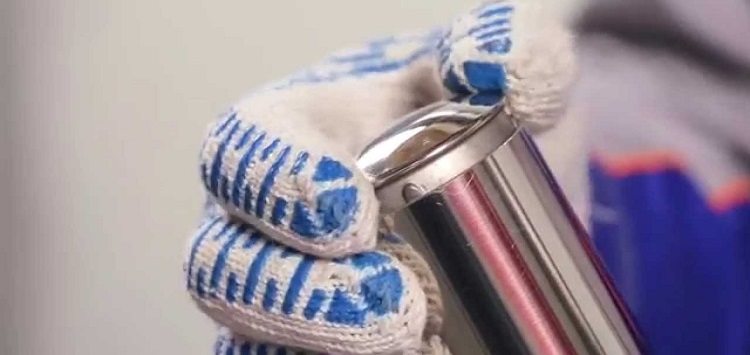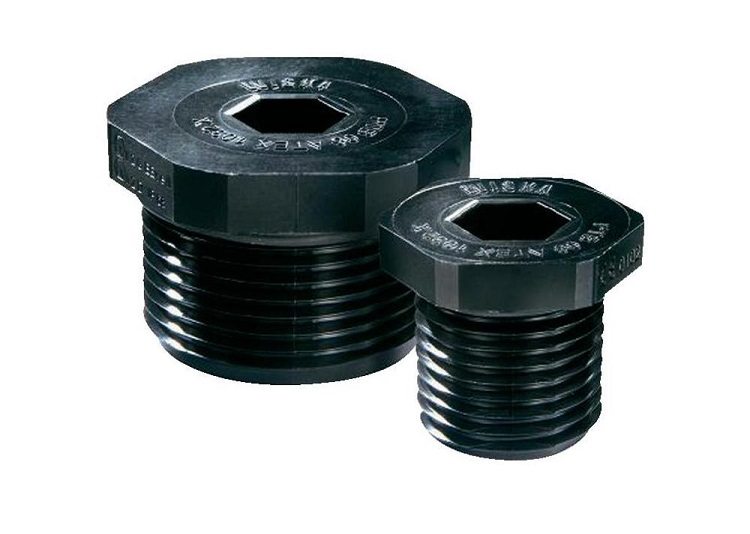Such a simple object in appearance and execution, as a stub, is used in practice for a variety of purposes. These products can perform certain functions on individual structural elements of the pipeline, primarily technological ones. Besides, metal caps can be seen on the finished structures, where they play the role of decorative ornaments.
Content
When and why do they apply
The need for jamming pipelines most often arises:
- when entering utilities in industrial and residential buildings to prevent foreign objects from getting inside the pipes. Of course, this can not always be done. The use of metal plugs for pipes will be justified if no wiring is planned in the near future. But here there is one caveat. If sewer pipes must be plugged in any case, then on the components of the water supply systems, including the final sections of the tees, the installation of stop valves is allowed;
- when separate sections of the pipeline are dismantled. The installation of plugs for metal (steel) pipes will allow disassembling individual branches without stopping the main highways.
Varieties and their design features
Threaded plugs. Such elements can be seen in almost every apartment. They are installed on household gas and water pipes. Plugs of this type are made not only of steel, but also of other metals. They are all equipped with pipe threads, both external and internal. Pipelines of small (up to 2 inches) diameter most often act as an object for their installation.
When installing a threaded metal plug on the pipe, carefully seal the connection with FUM tape or linen winding.
Helpful information! The second sealing option is considered more reliable. This is due to the fact that a very small reverse stroke of the plug (even half ˗ turn in the opposite direction along the thread) sealed by the FUM tape can cause a leak. The application of the first method is recommended when the dismantling of fittings for metal threaded pipes with their subsequent installation is often performed.
Crimp plugs. Fittings of this type got their name due to the fact that they can be fixed at the ends of round pipes without threading or welding, but with the help of a crimp ring. The requirements for the material of the manufacture of rings are formulated as follows: it must withstand the working pressure, vibration fatigue, while remaining reliable for a long time.
Installation of crimp fittings for metal pipes is carried out using special presses, which can have both manual and electric drives.
One of the main advantages of these parts is high technical performance. Therefore, without the use of crimping metal plugs for round pipes, it is unthinkable to carry out repair work in such complex industries as metrology, compression systems, gas turbine equipment, etc.
Caps are metal flange. These products are a blind flange without a central hole. Their installation does not cause absolutely any difficulties. This is done by bolting to the pipe flange. For sealing, gaskets made of different materials are used. To select a suitable sample, the pressure and temperature of the medium must be taken into account. The flange steel plug is used for pipes whose diameter exceeds 2 inches.
Steel caps. When it comes to metal structures, builders, without further ado, usually go in the simplest way: the end of the pipe is suppressed by welding a steel sheet. To give a more aesthetic design, the slag is cleaned, the end face is primed, and then painted. Steel caps in the form of balls and more complex elements are used to decorate metal fences. For example, some “advanced” owners use their full-cast image for this purpose (of course, not on a one-to-one scale) and install such “sculptures” on the pipes of the fencing of the garden plot. It should be borne in mind that the more complex the decorative plugs are, the more it is necessary to pay attention to strictly vertical orientation, the same height of the posts and the symmetry of the location of the decorations.
Why is this necessary from a practical point of view? Firstly, to prevent corrosion. This question is even relevant for galvanized pipes. Their Achilles heel is the butt. When cutting, the zinc coating is broken, and the pipe - whether profile round - begins to rust, as a result of which the fence loses its attractiveness. But the most important thing is that the structure begins to collapse quickly. And installing metal plugs on pipes slows down this unpleasant phenomenon.
Secondly, a fair portion of our compatriots, passing by an open pipe on top, use it as ... a small urn. Rotting paper and organics add neither beauty to the fence nor aromas in the air.
Helpful advice! In the modern market you can find not only metal locking elements. When choosing, the following requirement must be taken into account: the material of the plug must at least not conflict with the material of the pipeline, and even better if they are compatible.
Elliptical caps. This metal fitting is installed by welding. It can be used in an unused pipeline as a permanent plug on the sewer pipe. Such locking elements are usually made of carbon, stainless and alloy steels. The relevant GOST states that elliptical plugs and fittings must withstand pressure up to 16 MPa and operate in a wide temperature range of -70 ≤ T˚C ≤ +450. They are produced by stamping.
Compression fitting. This product is one of the varieties of crimp locking element. A distinctive feature of the compression fitting for a metal pipe is that it is equipped with a split crimp ring and is intended for use in open areas. The most popular today are such parts with a diameter of 16, 20, 26 and 32 millimeters. Ease of installation is the main advantage of a compression fitting. While the press model is mounted only with the help of specialized equipment, only two adjustable spanners are enough to fix the compression compression fitting.
Such locking elements are able to provide perfect tightness without welding or threaded connection with a sealant. Crimp rings are available in flexible yet durable materials. As a result, compression fittings are not afraid of either high pressure or prolonged vibration exposure. In addition, their design implies the possibility of mounting / dismounting, that is, plugs of this type can be used repeatedly.
The main details in crimping compression metal pipe fittings are as follows:
- housing;
- seal ring;
- crimp ring;
- clamping nut.
As you can see, everything is very simple, but not to the detriment of the reliability and tightness of the structure.
Tees. Types, purpose, application
Tees are designed to connect additional branches to the pipe. With their help, complex pipeline structures are created. Using one tee, you can create up to 3 branches. This element can also be designed for synchronous mounting to the body and neck. In this case, the nozzle neck is equipped with adjustments.
Tees are divided into two types: transitional and equal passage. According to the production method, they are ordinary and combined.
Helpful advice! For hot water pipes, it is recommended to give preference to combined fittings with smooth trunks. A feature of these parts is less resistance to fluid flow, which leads to the presence of their increased hydraulic characteristics.
Tees are made from carbon and stainless steel, as well as from polypropylene. All of them are characterized by very high demand. But special attention should be paid to the metal tee for pipes. Depending on the method of attachment, this element may be threaded and welded. In the first case, the product is screwed on, in the second - it is welded to the structure using a special apparatus. It is obvious that the use of a threaded element provides labor savings during repair work during operation of pipes.
When choosing a tee, it is necessary to be guided simultaneously by two criteria: the grade of steel and the method of fastening. The degree and duration of the load on the pipes should also be taken into account.
On the modern market there are fittings with which you can create a wide variety of types of connections. So, depending on how the pipes run, you can choose a tee, the tap of which is located at an angle of 30, 45 or 90 degrees.
For the transportation of oil, corrosive liquids, gas, as well as in manufacturing industries, preference should be given to those fittings for metal pipes that were made of carbon light alloy steel. Their advantages include resistance to corrosion, resistance to the negative effects of aggressive environments, long service life and safety.
It is important to purchase not the cheapest, but the highest quality products. If such an element becomes unusable, the landlord will be forced to spend a lot of money to replace it. It will be difficult for even a professional plumber to dismantle the tee with the subsequent installation of a new instance, when the pipes run in an inaccessible place.












